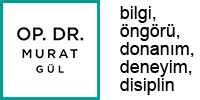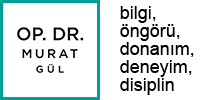Neonatal Conjunctivitis
Neonatal conjunctivitis refers to eye inflammation occurring within the first four weeks of life. It may result from:
✔ Chemical reactions (e.g., silver nitrate exposure)
✔ Bacterial infections (e.g., Neisseria gonorrhoeae, Chlamydia trachomatis)
✔ Viral infections (e.g., herpes simplex virus)
1. Chemical Conjunctivitis
✔ Caused by silver nitrate, used as a prophylactic against gonococcal infections.
✔ Symptoms appear minutes to hours after application, lasting 24-36 hours.
✔ Characterized by mild redness and tearing.
✔ Use of erythromycin or tetracycline ointments has reduced its occurrence.
2. Chlamydial Conjunctivitis
✔ Chlamydia trachomatis infects 10% of pregnant women, affecting 30-40% of newborns.
✔ 5-14 days after birth, symptoms appear:
🔹 Watery discharge → thick, purulent mucus
🔹 Swollen eyelids, red conjunctiva, membrane formation
✔ Can lead to adhesions and pannus formation (corneal vascularization).
✔ Diagnosis: Special staining, PCR tests, immunological lab tests.
✔ Treatment:
🔹 Oral erythromycin for 14 days (topical treatment alone is insufficient).
🔹 Monitor for respiratory infections, as 10-20% of affected infants develop pneumonia.
3. Gonococcal Conjunctivitis (Neisseria gonorrhoeae)
✔ Rare today due to prophylactic treatment.
✔ Symptoms appear 24-48 hours after birth:
🔹 Severe eye redness, swelling, thick purulent discharge
🔹 Membrane formation on conjunctiva
✔ Can cause corneal ulceration and perforation.
✔ Diagnosis:
🔹 Conjunctival swab with Gram stain
🔹 Culture and laboratory confirmation
✔ Treatment:
🔹 Topical and systemic penicillin
🔹 Hospitalization for intravenous antibiotics if severe
4. Bacterial Conjunctivitis
✔ Caused by Gram-positive or Gram-negative bacteria.
✔ Appears 2-5 days after birth.
✔ Pseudomonas species require special attention, as they can cause corneal ulcers.
✔ Treatment:
🔹 Erythromycin ointment (0.5%) for Gram-positive bacteria
🔹 Aminoglycoside or fluoroquinolone drops for Gram-negative bacteria
5. Viral Conjunctivitis
✔ Herpes Simplex Virus (HSV-1 & HSV-2)
🔹 HSV-1: Acquired from oral secretions (cold sores).
🔹 HSV-2: Acquired from the birth canal during delivery.
✔ Appears within the first two weeks with:
🔹 Vesicular rash on eyelids
🔹 Dendritic epithelial keratitis (branch-like corneal lesions)
🔹 Deep corneal opacity, iris inflammation, optic nerve involvement
✔ Treatment:
🔹 Topical Trifluridine drops or Acyclovir ointment for 7 days
🔹 Systemic antiviral therapy if systemic involvement is present
Key Takeaways
✔ Early diagnosis and treatment are crucial to prevent complications like blindness.
✔ Bacterial infections require antibiotics, while viral cases need antiviral therapy.
✔ Silver nitrate-related conjunctivitis is mild and self-limiting.
✔ Chlamydial and gonococcal infections can be severe and require systemic treatment.
👶 Routine neonatal eye screening is essential to prevent vision-threatening complications!

